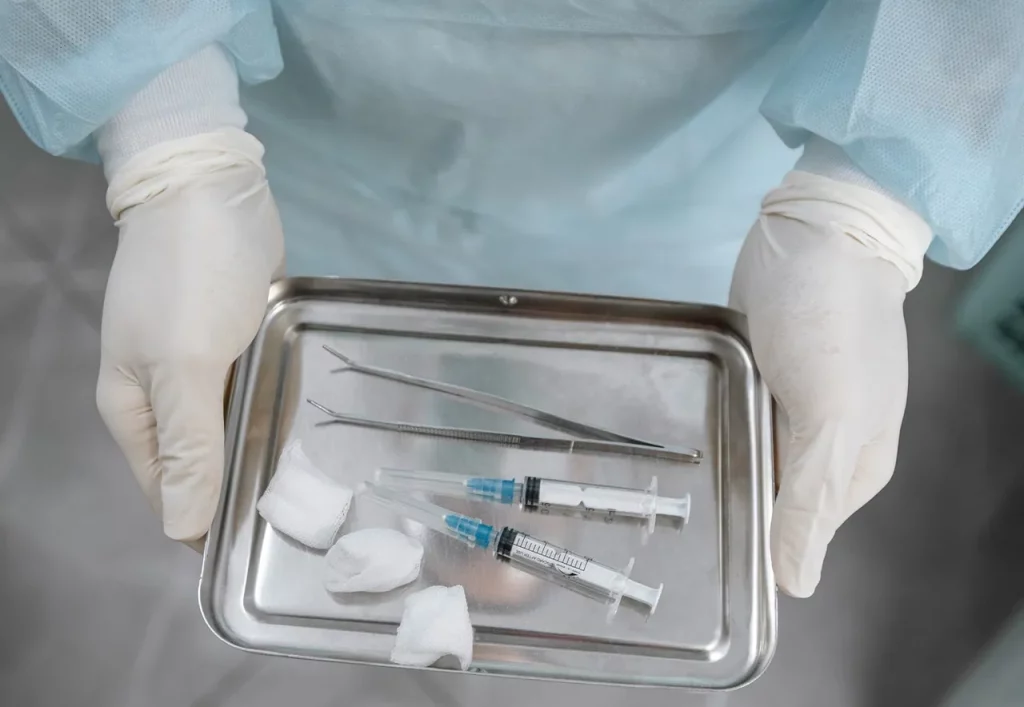Know All About Paraphimosis: Its Causes, Symptoms and Treatment
Know All About Paraphimosis: Its Causes, Symptoms and Treatment

Paraphimosis is a disorder that only impacts males who have not been circumcised. It happens when the foreskin can’t be pulled forward over the head of the penis any longer. This creates the foreskin to swell and then become trapped. This will lead to slowing or stopping blood flow to the head of the penis. If not treated, the situation can lead to severe problems.
The most common cause of paraphimosis is when a health professional mismanages the foreskin. After a medical examination or surgical procedure, they may not return the foreskin to its original position.
The terms paraphimosis and phimosis are not interchangeable. Phimosis is a situation wherein the foreskin of the penis can’t be pulled back. It usually affects young kids and isn’t a life-threatening condition. Paraphimosis, on the other hand, is a medical emergency. If you have symptoms of paraphimosis, see your physician or visit the hospital immediately.
Table of Contents
Symptoms of Paraphimosis
The inability to revert the foreskin to its usual place over the head of the penis is a significant indicator of paraphimosis. The foreskin and the penis tip may become swollen and painful. Because of lack of blood flow, the tip of the penis may also turn dark red or blue.
Other signs and symptoms could include:
- tenderness, redness
- inability to urinate and swelling of the penis
Paraphimosis Causes
Any of the following circumstances or actions can end up causing paraphimosis:
- A foreskin that has been retracted long enough for causing swelling. This can occur after or during a medical assessment, cleaning, or urination.
- The penis swells because of a tight foreskin that is rescinded. As a result, the foreskin cannot return to its normal position.
- Intensive sexual intercourse, penile piercing, and the use of a confining penile ring to compress the erection.
The following medical issues or procedures can cause paraphimosis:
- Infection can occur due to a variety of factors, such as poor personal hygiene.
- The scarring of the foreskin due to repeated infectious disease or forcible retraction of the foreskin in adolescent boys.
- A circumcision that hasn’t been performed properly.
- An insect or spider bite causes swelling of the penis and foreskin.
One of the following causes paraphimosis in older men:
- Diabetes affects the penis and foreskin, starting to cause chronic inflammation. Paraphimosis is more likely as a result of this.
- Catheterization was performed without repositioning the foreskin to its usual position.
The foreskin does not rescind in children until they are about two years old. By the age of ten, most boys would have a retractable foreskin, and forcing the foreskin back before it becomes prepared can end up causing scarring, which can lead to paraphimosis.

Paraphimosis Diagnosis
A doctor can confirm the diagnosis of paraphimosis with a physical examination.
It’s generally easy to spot, with a tight band of foreskin stuck at the back of the penis’ head.
However, the constraining foreskin band is sometimes completely obscured by the swollen tissue.
A person will generally be inquired as part of paraphimosis diagnosis to determine background knowledge, such as symptoms, difficulties, or activities about the genitals or foreskin.
In most cases, additional tests are not essential to confirm a diagnosis. Additionally, one can take a swab during an examination to identify the type of infection that resulted in the paraphimosis.
If there is a circumcision earlier, the doctor may rule out a paraphimosis diagnosis.
Paraphimosis Treatment
The type of treatment you receive will vary according to age and the severity of the disorder. In general, reducing inflammation is the first line of treatment of paraphimosis. Your doctor may perform the following procedures:
- ice the affected area
- use needles to drain pus or blood
- wrapping a bandage around the penis.
- Inject hyaluronidase, an enzyme that aids in the reduction of swelling.
Using a saline swab, the doctor will apply pressure to the swollen penis for 5-30 minutes. It’s also possible to use ice. These treatment options can help reduce swelling, making it easier to push the penis back into position while dragging the foreskin back into position.
If manual manipulation fails, a puncture technique might be necessary. This procedure usually necessitates some form of sedatives or local anesthesia.
This enables the discharge of built-up liquid and simpler physical manipulation of the foreskin.
Home Treatment
One can prevent paraphimosis with the help of complete circumcision. One can avoid paraphimosis even if you haven’t undergone complete circumcision:
- Implementing proper hygiene and washing the tip of the penis regularly to prevent smegma formation.
- every time putting the foreskin back over the head of the penis when pulled back for cleaning, sexual contact, or urination
- ensuring that the foreskin is returned to its correct position by a healthcare provider after a diagnosis or operation
- never leaving the foreskin behind the head of the penis for long periods
Potential Complications of Paraphimosis
In extreme situations of paraphimosis, a full circumcision or separation of the foreskin may be essential. Moreover, this will also help stop the problem from recurring.
After an operation, take time to carefully implement your doctor’s orders and take any prescribed medicine. After diagnosis, your doctor will show you how to wash and care for the penis tip.
If you get a high fever or are still in anguish after treatment, contact your doctor right away. Also, these signs and symptoms could indicate an infection that requires antibiotic treatment.
The age of a person is a potential risk for paraphimosis. The condition can strike anyone at any age, but it is most prevalent during adolescence.
Paraphimosis repetition is relatively common. Once the swelling subsides, circumcision can prevent a recurrence. If left untreated, it can result in loss of blood flow and the loss of the penis’ tip. Treating paraphimosis ensures high possibilities of complete recovery. In most cases, when the foreskin returns to its normal position, and there is a reduction in swelling, many individuals recover with no complications.
Bottom Line
Paraphimosis, when diagnosed and treated early, can get good outcomes. Since the skin retracts, a tiny quantity of bleeding may occur, but long-term complications are uncommon. Take online consultation from Ohman and clear all your doubts about Sexually transmitted diseases and other diseases similar to paraphimoses like Epididymitis, Hypogonadism, and prostatitis. You can also buy online medicine for premature ejaculation and Dhat rog from OH! Man.



